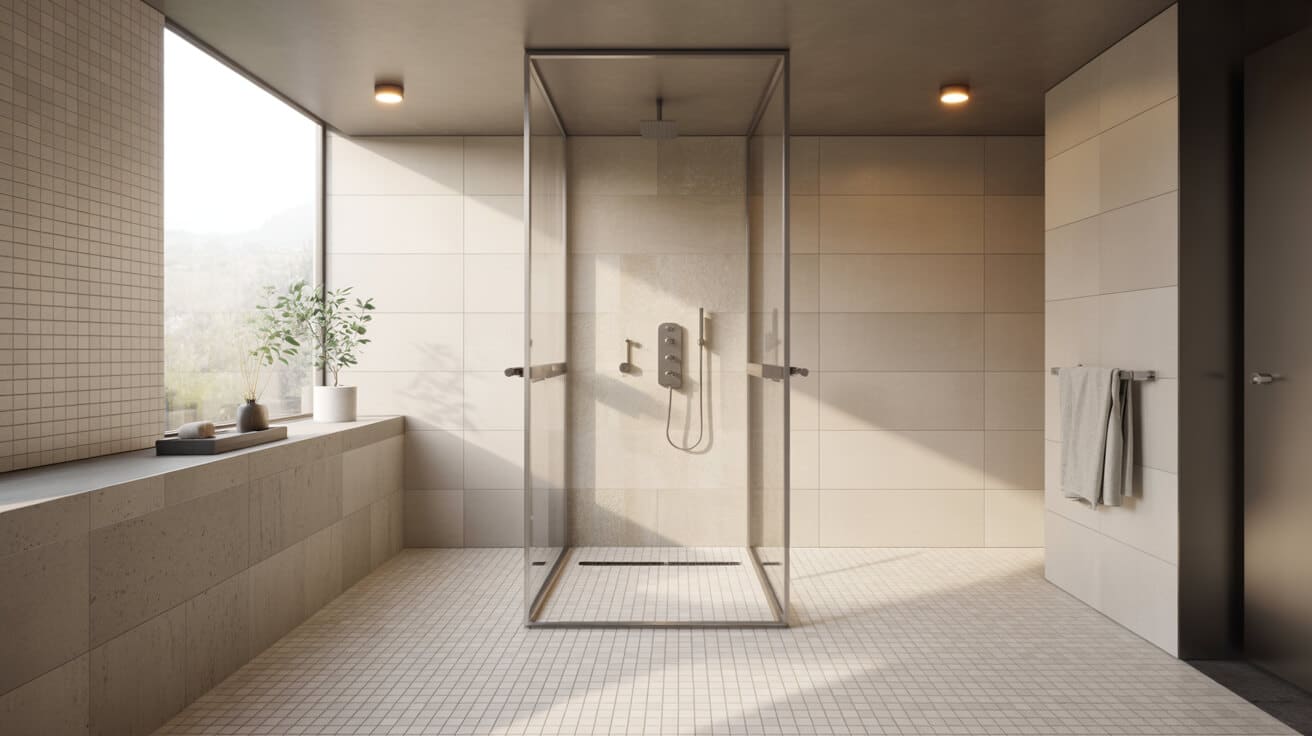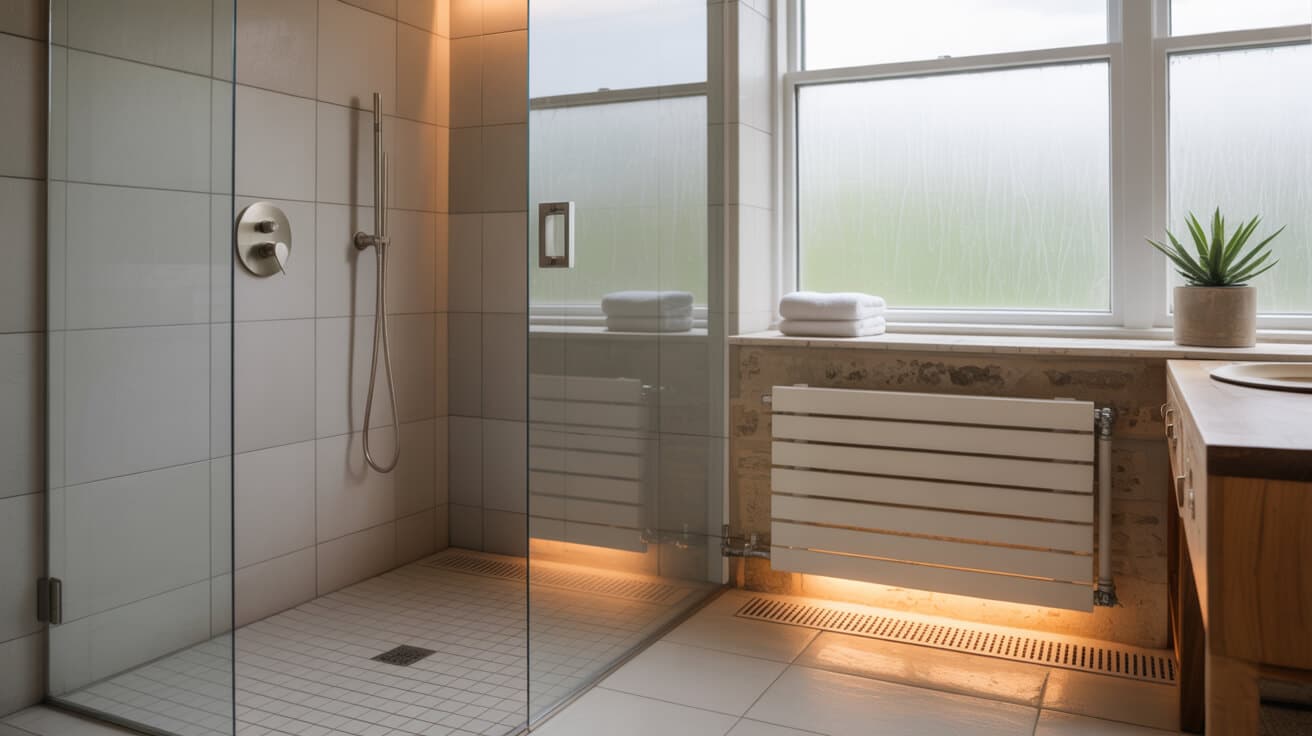Energy performance regulations aim to reduce energy consumption and greenhouse gas emissions by establishing quantifiable benchmarks for buildings. These regulations influence the design, installation, and operation of heating systems, plumbing, and insulation in properties, ensuring that installations adhere to nationally defined energy-saving targets. For plumbing and heating companies, such as those exemplified by Plumbers 4U, compliance is not only a legal obligation but also a pathway to improved system efficiency, reduced operating costs, and enhanced property valuations.
Etymology or Name Origin
The terminology used in energy performance building regulations has evolved over several decades. Terms like “Energy Performance Certificate” (EPC) and “Minimum Energy Efficiency Standards” (MEES) emerged in response to national and international environmental imperatives during the late twentieth century. The adoption of the Standard Assessment Procedure (SAP) provided a framework for calculating a building’s energy efficiency, which paved the way for standardised energy ratings. Over time, these terms have become embedded in the lexicon of the construction and maintenance sectors, and they are now widely used in policy documentation and industry guidelines.
Overview / Context
Energy performance building regulations constitute a comprehensive framework designed to encourage responsible energy use in buildings. Primarily delivered through Building Regulations Part L, these standards require that both new constructions and renovations meet specific energy efficiency targets to reduce overall consumption.
The regulations are underpinned by the issuance of Energy Performance Certificates (EPCs), which provide an objective measure of a building’s energy efficiency on a scale from A (most efficient) to G (least efficient). They are developed in response to environmental concerns and rising energy costs, aiming to improve overall sustainability in both residential and commercial properties. In the plumbing and heating sector, these regulations dictate the deployment of advanced equipment and integrated systems that collaboratively work to meet energy efficiency goals. Upgrades such as condensing boilers, digitally controlled underfloor heating, and smart thermostat systems play a critical role in achieving these regulatory targets.
History
Energy performance regulations have their roots in the energy crises of the 1970s, which spurred governments to seek methods for reducing national energy consumption. Early legislative measures predominantly addressed safety and construction quality; however, economic pressures eventually led to the incorporation of energy efficiency as a key objective. In the 1990s, a move towards quantifiable standards saw the introduction of Energy Performance Certificates, which provided a common metric for assessing building efficiency.
As technological advances and environmental awareness increased, further refinements were introduced in the form of Minimum Energy Efficiency Standards (MEES) for existing buildings. Over time, updates to Building Regulations Part L have steadily raised the performance criteria, thereby influencing the way plumbing and heating systems are designed and maintained. These historical developments illustrate how regulatory frameworks have significantly shaped industry practices, evolving from simple energy reduction directives to a sophisticated system of compliance that integrates digital monitoring and advanced engineering.

Concept / Description
Energy performance regulations operate on the principle that improved energy efficiency yields economic, environmental, and social benefits. At their core, these regulations establish a set of minimum standards that buildings must achieve, using formal assessment procedures like the Standard Assessment Procedure (SAP) to generate an Energy Performance Certificate (EPC). The EPC, in turn, provides a snapshot of the building’s overall energy consumption and environmental impact.
Key components include:
- Building Regulations Part L: This section of the Building Regulations outlines the minimum energy conservation measures for new and existing buildings. It sets standards for insulation, heating systems, and overall thermal performance.
- Energy Performance Certificates (EPCs): EPCs deliver a rating of a building’s energy efficiency and are used as a tool for comparison, guiding property owners in identifying areas for improvement.
- Minimum Energy Efficiency Standards (MEES): Particularly aimed at the private rented sector, MEES require properties to meet a minimum energy rating before they can be legally rented.
- Standard Assessment Procedure (SAP): SAP provides a detailed analysis of a building’s energy usage based on thermal performance, heating efficiency, and other factors. The resulting score is critical to determining the building’s EPC rating.
In the plumbing and heating field, these regulatory measures necessitate that every component, from heat generators like boilers to distribution systems like pipework and radiators, is optimised for energy efficiency. Advanced technologies including high-efficiency condensing boilers, unvented hot water cylinders, and smart thermostat systems are increasingly becoming standard practice. This integration of modern technology with traditional systems enables compliance with regulatory mandates while simultaneously reducing energy costs and environmental impact.
Functionality / Purpose / Applications
Energy performance regulations are implemented to ensure buildings operate at optimum energy efficiency, minimising energy wastage and reducing emissions. Their practical applications in the plumbing and heating domain include:
- System Design and Retrofit: By specifying energy performance thresholds, regulations drive the adoption of modern heating systems such as Condensing Boilers and underfloor heating systems. Upgrading older systems to meet the required standards results in improved energy efficiency and lower operational costs.
- Energy Audits and Compliance: Regular energy audits, which assess the performance of plumbing and heating systems, are integral to determining compliance. These audits utilise standardised methodologies like SAP and deliver EPC ratings that guide maintenance and retrofit programmes.
- Integration of Modern Technologies: The implementation of smart controls, including programmable thermostats and zoning valves, facilitates more efficient management of heating systems. By adjusting heating output based on occupancy and external conditions, these systems optimise energy use without compromising comfort.
- Cost Savings and Environmental Benefits: Reducing energy consumption translates into significant cost savings for property owners and lower carbon emissions. In practice, energy-efficient plumbing and heating installations contribute to sustainable building practices while also improving property marketability.
- Regulatory Compliance: Achieving and maintaining compliance with energy performance requirements is crucial for avoiding legal penalties and ensuring that properties meet established standards. Certification through bodies such as WRAS and compliance with CP12 and G3 certification schemes underscores the commitment to quality and safety.
These applications underscore the multifaceted impact of energy performance regulations. They provide the means for technical optimization within building services, enhancing both economic efficiency and environmental stewardship.
Classifications / Types / Variants
The various systems within the plumbing and heating sector can be classified based on their design and performance characteristics, as influenced by energy performance regulations:
- Hot Water Systems:
- *Vented Systems:* Utilise gravity-fed cold water storage tanks and typically involve a separate cylinder for hot water.
- *Unvented Systems:* Operate under pressure and generally require a G3 certification; these systems freely deliver consistent hot water without the need for a tank.
- Boilers:
- *combi boilers:* Provide heating and hot water directly, ensuring quick delivery and space savings.
- *System Boilers:* Coupled with a hot water cylinder, these boilers are designed to meet higher demand efficiently.
- *Condensing Boilers:* Engineered to recover latent heat from exhaust gases, offering superior efficiency compared to traditional boilers.
- Heating Distribution Systems:
- *Underfloor Heating (UFH):* Can be either hydronic (water-based) or electric, each variant presenting specific energy performance profiles.
- *Radiators and thermostatic radiator valves (TRVs):* Allow for zone-based control and contribute to overall efficiency through regulated heat distribution.
- Smart Controls and Zoning Systems:
- Systems incorporating smart thermostats and zoning controls enable precise regulation of heating output, directly influencing a building’s energy performance.
- Insulation and Lagging:
- Adequate insulation of pipes and cylinders is essential for minimising heat loss, an important aspect that impacts overall performance metrics.
This hierarchical classification helps delineate which types of systems and components contribute to energy efficiency and how they should be implemented to meet regulatory objectives.
Systems / Tools / Methodologies
Plumbing and heating companies employ systematic approaches to assess and improve energy performance, relying on a variety of methodologies and instruments:
- Energy Audit Procedures:
- Energy audits utilise tools such as thermal imaging cameras, pressure gauges, and flow metres to measure the efficiency of heating systems. These audits yield SAP scores, which form the basis of EPC ratings.
- Standard Assessment Procedure (SAP):
- SAP provides a comprehensive method for calculating a building’s energy performance. It considers elements such as insulation quality, heating system efficiency, and ventilation, and produces a quantifiable score that informs regulatory compliance.
- Diagnostic Tools:
- Instruments such as leak detection devices and digital thermometers ensure technical accuracy during system inspections. These tools are critical for identifying inefficiencies, such as underperforming boilers or improperly insulated pipework.
- Retrofit and Upgrade Methodologies:
- Techniques for upgrading legacy systems include the retrofitting of condensing boilers, installation of smart thermostats, and enhancement of underfloor heating systems with modern digital controls. Comparative analyses between existing and upgraded systems guide investment decisions.
- Compliance Checklists:
- Checklists based on WRAS and CP12 standards provide structured guidance to ensure that all installations conform to regulatory requirements. These tools are essential for quality assurance and certification purposes.
A systematic approach that combines these methodologies ensures that energy performance improvements are both measurable and sustainable. The integration of diagnostic tools with compliance protocols enables ongoing monitoring and iterative improvements.

Stakeholders / Entities Involved
The ecosystem of energy performance building regulations is influenced by various stakeholders who are responsible for its implementation and ongoing enforcement:
- Regulatory Agencies:
Government bodies and local authorities administer and enforce energy performance standards across the building sector. These agencies set the statutory requirements and oversee compliance at the property level.
- Certification Bodies:
Organisations such as the Water Regulations Advisory Scheme (WRAS) and G3 Certification boards ensure that plumbing and heating installations meet stringent performance and safety criteria. They provide certifications that verify compliance with national energy performance standards.
- Industry Associations:
Bodies including the Chartered Institute of Plumbing and Heating Engineering (CIPHE) play a pivotal role in disseminating best practices and updating technical standards. These organisations help drive consistent industry quality.
- Plumbing and Heating Companies:
Service providers, exemplified by Plumbers 4U, are at the forefront of implementing regulated systems. Their responsibilities include installation, maintenance, and regular inspections to ensure that systems conform to energy efficiency targets.
- Property Managers and Landlords:
These stakeholders rely on energy performance ratings to determine the market value of properties and to comply with legal requirements such as MEES. They directly benefit from improved efficiency through lower operating costs and enhanced tenant satisfaction.
- Homeowners and Tenants:
End users are indirectly impacted by energy regulations through improved comfort, reduced utility bills, and enhanced environmental performance. Their properties gain added market value when energy performance is optimised.
Interactions among these stakeholders create a network of accountability and continuous improvement that is vital for the sustainable operation of building systems.
Legal / Regulatory / Ethical Considerations
Legal and regulatory frameworks are integral to ensuring that energy performance standards are met and maintained in all buildings. Key considerations include:
- Building Regulations Part L:
This foundational regulation specifies the minimum energy efficiency standards required for new construction and subsequent modifications. It mandates that system designs incorporate energy-saving measures and proper insulation.
- Energy Performance Certificates (EPCs):
EPCs provide a measurable rating of a building’s energy efficiency and serve as a key tool for enforcement. They are calculated using standardised protocols such as SAP and are required for property transactions and leasing.
- Minimum Energy Efficiency Standards (MEES):
MEES impose minimum performance thresholds, particularly in the rental and commercial sectors, compelling property owners to undertake necessary upgrades.
- Certification Standards:
Compliance with certifications such as WRAS and G3 is critical for verifying that installations meet both technical and safety standards. These certifications validate that the system’s construction and materials are compliant with stringent regulatory requirements.
- Ethical Practice and Transparency:
Beyond legal mandates, ethical considerations require that plumbing and heating companies ensure all work is performed safely, transparently, and sustainably. This includes accurate representation of system performance and clear communication with property owners regarding energy efficiency.
A robust legal framework not only enforces compliance but also drives industry improvement by establishing benchmarks for quality and sustainable practices.
Performance Metrics / Data / Measurements
Accurate measurement and data collection are pivotal in determining a building’s energy performance. Key instruments and metrics include:
- EPC Rating Scale:
The Energy Performance Certificate provides a rating across a scale from A to G, quantifying the building’s energy efficiency based on a series of standardised tests.
- SAP Scores:
The Standard Assessment Procedure (SAP) calculates an overall score that factors in insulation, heating efficiency, and ventilation. This score directly informs the EPC rating.
- Carbon Emission Metrics:
Measurements such as kWh/m² and carbon footprint values quantify energy usage and environmental impact, helping stakeholders gauge the effectiveness of energy-saving measures.
- Efficiency and Loss Metrics:
Specific parameters such as the efficiency of condensing boilers, thermal retention rates in underfloor heating, and the performance of smart thermostatic controls provide detailed insights into system performance.
- Data Collection Techniques:
Empirical methods using thermal imaging, pressure tests, and flow rate measurements ensure that data are accurate and repeatable. These metrics are crucial for continuous monitoring and compliance verification.
Such performance measurements are essential for both regulatory compliance and strategic planning, allowing for iterative system improvements and targeted upgrades.
Challenges / Barriers / Limitations
Implementing energy performance building regulations in the plumbing and heating industry faces several challenges:
- Operational and Technical Limitations:
Many existing systems are outdated and lack modern efficiency features, necessitating substantial retrofitting. Technological challenges in calibration and maintenance may further impede efficiency improvements.
- Financial Barriers:
The initial capital outlay required for upgrades can be significant. Accessing funding for such projects is often a major concern for property owners and commercial entities, affecting the pace of implementation.
- Regulatory Complexity:
The evolving nature of building regulations requires continuous adjustments to system designs and maintenance practices. Discrepancies between national guidelines and local enforcement practices can complicate compliance efforts.
- Market and Social Factors:
Variability in consumer awareness and a reluctance to endure high upfront costs often impede the widespread adoption of energy-efficient systems. Economic fluctuations may also influence investment decisions.
- Broader Debates:
There exists ongoing discourse regarding the balance between stringent regulatory oversight and the flexibility necessary for innovation. These debates can affect policy implementation and the industry’s responsiveness to emerging technologies.
Addressing these challenges necessitates a systematic and collaborative approach that integrates technical upgrades with ongoing financial planning and regulatory monitoring.
Impact / Influence / Legacy
The influence of energy performance building regulations extends through multiple dimensions across the built environment:
- Economic Impact:
Improved energy performance contributes to higher property valuations and more attractive rental yields due to lower operating costs. Energy-efficient buildings often command a premium in the market.
- Environmental Benefits:
By reducing energy consumption and associated carbon emissions, these regulations play a crucial role in mitigating climate change. Enhanced system efficiency translates directly into reduced environmental footprints.
- Industry Transformation:
The drive for compliance has spurred innovation within the plumbing and heating sectors. Companies are increasingly adopting state-of-the-art systems and smart controls that not only meet regulatory standards but also drive long-term improvements in energy performance.
- Societal Influence:
As consumers become more conscious of energy costs and environmental effects, the uptake of efficient systems increases. This shift in consumer demand reinforces a cycle of industry improvement where ongoing innovation is rewarded with higher levels of homeowner satisfaction.
- Legacy of Best Practices:
Over time, adherence to energy performance standards establishes a legacy of quality and sustainability that shapes future industry trends. It promotes a culture of continuous improvement and sets a benchmark for subsequent regulatory enhancements.
The cumulative effects of these impacts foster a sustainable built environment where economic, environmental, and social benefits converge.
Future Directions, Cultural Relevance, and Design Discourse
Emerging trends and evolving standards in energy performance regulations indicate a dynamic future for the plumbing and heating industries. Advancements in technology and shifts in cultural perspectives are poised to redefine the regulatory landscape:
- Technological Innovations:
Continued progress in digital audit tools, smart controls, and real-time performance monitoring is expected to enhance the precision of energy assessments. Innovations such as digital twin simulations and advanced data analytics will provide more granular insights into system performance.
- Regulatory Revisions:
As building technology evolves, regulatory frameworks will inevitably be revised to incorporate new methodologies and emerging standards. Future regulations may offer more tailored approaches based on property type or usage patterns, leading to more effective energy conservation strategies.
- Sustainability and Environmental Priorities:
With growing public awareness about climate change, energy performance regulations are likely to further prioritise sustainable practices. This may include stricter efficiency requirements, increased support for renewable energy integration, and the promotion of eco-friendly retrofit measures.
- Cultural and Design Shifts:
The integration of energy performance criteria into early building design and architecture is accelerating. A cultural shift towards sustainability is influencing design philosophies, with emphasis on minimal energy loss, reduced environmental footprints, and integrated smart systems.
- Market Dynamics and Economic Incentives:
Continued emphasis on sustainable development may lead to enhanced government incentives and financing options for energy-efficient upgrades. These economic drivers will likely boost investment in modern plumbing and heating systems while ensuring compliance with evolving regulations.
- Interdisciplinary Approaches:
Future discourse is expected to increasingly consider the intersection of various fields, such as sustainable architecture, digital control systems, and environmental policy. This interdisciplinary approach will promote innovative solutions that balance regulatory compliance with market flexibility.
- Stakeholder Collaboration:
Enhanced communication and collaboration between regulatory bodies, industry associations, and service providers will be critical. As stakeholders work together on establishing and refining best practices, the entire industry will benefit from shared knowledge and collective improvement efforts.
These forward-looking perspectives underscore a trend toward more integrated, technology-enhanced, and environmentally conscious approaches in the building sector. They will shape how regulations evolve and how plumbing and heating companies pursue continuous improvement, ensuring that energy performance remains central to both technical operations and strategic planning.

